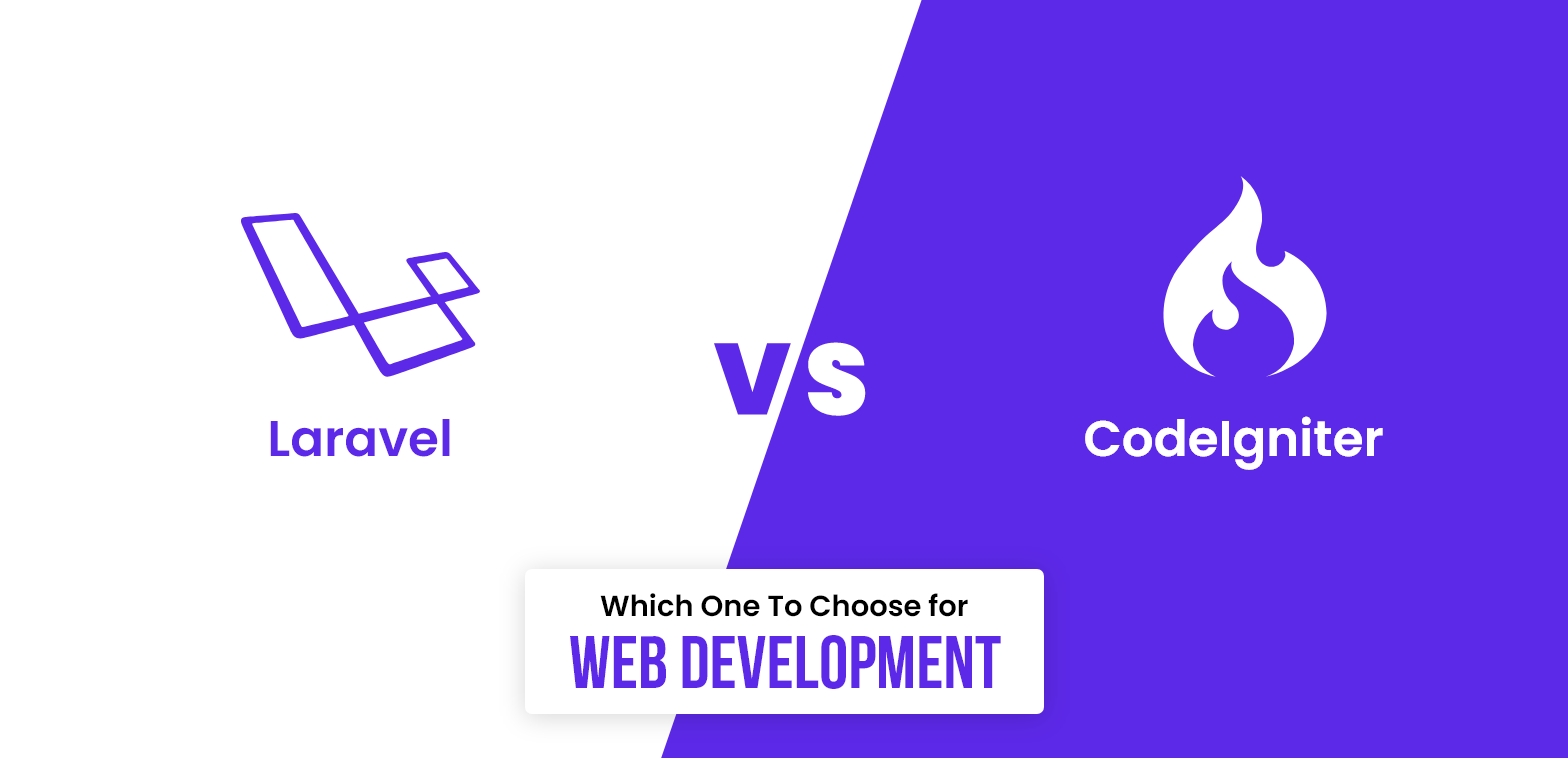
When it comes to PHP web development, two highly popular frameworks, Laravel and CodeIgniter, have emerged as leading choices for developers. Each framework possesses distinct features and caters to different preferences and project requirements. In this blog post, we will conduct an in-depth and unique comparison between Laravel and CodeIgniter, helping you make an informed decision about the framework that best suits your web development needs.
If you’re looking for the best Toronto company to handle your PHP web development projects, look no further than Foremost Digital. With expertise in both Laravel and CodeIgniter, our team of skilled developers can deliver high-quality web solutions tailored to your specific requirements. Whether you need a small business website or a complex web application, our experienced professionals will ensure that your project is executed efficiently and with precision.
Popularity and Community Support:
Laravel: Laravel’s meteoric rise in popularity can be attributed to its modern features, elegant syntax, and a vast and dynamic developer community. With an extensive ecosystem of packages and extensions available via Composer, Laravel enables seamless integration of functionalities and robust support from the community.
CodeIgniter: CodeIgniter has a long-standing presence and boasts a stable community of dedicated users. Though its popularity might not match Laravel’s, it remains a reliable choice with a committed user base and active community support.
Learning Curve:
Laravel: Following the MVC (Model-View-Controller) pattern, Laravel encourages modern PHP practices. While this results in a steeper learning curve for newcomers to PHP frameworks or MVC architecture, seasoned developers familiar with PHP frameworks will find Laravel’s learning curve manageable and ultimately rewarding.
CodeIgniter: Renowned for its simplicity and intuitive structure, CodeIgniter’s straightforward documentation and minimal configuration make it an excellent option for developers with prior PHP experience, enabling rapid development without compromising on performance.
Features and Ecosystem:
Laravel: Offering an extensive array of built-in features, including Eloquent ORM, Blade templating engine, Artisan CLI, and middleware support, Laravel significantly streamlines the development process. This empowers developers to focus on crafting robust web applications with a rich feature set and maximum efficiency.
CodeIgniter: In contrast, CodeIgniter adopts a lightweight approach, prioritizing simplicity and performance. While it may lack the pre-packaged features of Laravel, it provides essential functionalities and allows developers to integrate specific libraries tailored to their project requirements.
Performance:
Laravel: Due to its feature-rich nature, Laravel may introduce a slight overhead that could impact performance. Nonetheless, adhering to optimization techniques, caching, and best practices, Laravel can deliver outstanding performance across most applications.
CodeIgniter: CodeIgniter’s lightweight design inherently consumes fewer resources and ensures faster execution times. For projects with a primary focus on performance, CodeIgniter emerges as a strong contender.
Long-term Support and Updates:
Laravel: With its consistent release cycle and provision of long-term support (LTS) versions for stable releases, Laravel guarantees timely security updates and bug fixes. This makes it an ideal choice for long-term projects requiring continuous support and maintenance.
CodeIgniter: While CodeIgniter remains actively maintained, its release cycle might not be as consistent as Laravel’s. However, the framework still receives valuable support and updates from its dedicated community.
CodeIgniter:
Pros:
1. Simplicity: CodeIgniter’s straightforward and intuitive structure makes it an excellent choice for developers with prior PHP experience, enabling quick and easy project setup.
2. Lightweight and Fast: CodeIgniter’s lightweight design ensures faster execution times and lower resource consumption, making it ideal for performance-critical applications.
3. Flexibility: CodeIgniter allows developers to integrate specific libraries and components based on their project needs, providing flexibility in choosing the best tools.
4. Stable Environment: CodeIgniter’s less frequent updates and LTS versions lead to a more stable environment, reducing potential maintenance challenges for long-term projects.
5. No Strict Requirements: CodeIgniter does not impose strict requirements on the server, making it compatible with various PHP configurations.
Cons:
1. Limited Built-in Features: CodeIgniter might not offer as many built-in features as Laravel, requiring more manual setup for certain functionalities or reliance on third-party libraries.
2. Smaller Community: CodeIgniter’s popularity has decreased compared to Laravel, resulting in a smaller community and potentially fewer third-party packages and support.
3. Limited Modern PHP Practices: CodeIgniter might not emphasize modern PHP practices to the same extent as Laravel, potentially limiting scalability for more complex projects.
Laravel:
Pros:
1. Robust Ecosystem: Laravel boasts a vast and thriving ecosystem with numerous third-party packages and extensions available through Composer. This ecosystem accelerates development and provides solutions for various requirements.
2. Elegant Syntax: Laravel’s expressive and elegant syntax makes code readability and maintenance easier, contributing to a more enjoyable development experience.
3. Rich Feature Set: Laravel comes with built-in features like Eloquent ORM, Blade templating engine, Artisan CLI, middleware support, and more, streamlining the development process and promoting code reusability.
4. Powerful ORM: Eloquent ORM simplifies database interactions and makes it easier to work with relational databases, reducing the amount of boilerplate code required for database queries.
5. Artisan CLI: Laravel’s Artisan command-line interface automates repetitive tasks, such as creating migrations, generating code skeletons, and running tests, enhancing developer productivity.
6. Laravel Mix: The built-in Laravel Mix simplifies asset management, allowing developers to compile and minify assets easily, including CSS, JavaScript, and more.
7. Laravel Horizon and Forge: Horizon provides a robust dashboard for monitoring and managing queues, while Forge streamlines server provisioning and deployment processes.
Cons:
1. Steeper Learning Curve: Laravel’s extensive feature set and modern PHP practices may present a steeper learning curve for developers new to PHP frameworks or MVC architecture.
2. Performance Overhead: Due to its feature-rich nature, Laravel might introduce a slight performance overhead compared to more lightweight frameworks like CodeIgniter.
3. Frequent Updates: The frequent release cycle and updates might require more effort to maintain and keep up-to-date, especially for long-term projects.
Both Laravel and CodeIgniter have their unique strengths and weaknesses. Laravel’s rich feature set, powerful ecosystem, and modern PHP practices make it suitable for larger, more complex projects with a dedicated developer community. On the other hand, CodeIgniter’s simplicity, performance, and stability make it an excellent choice for smaller projects and performance-critical applications. Ultimately, the choice between Laravel and CodeIgniter depends on your project’s requirements, team expertise, and the specific goals you aim to achieve.
Frequently Asked Questions (FAQs)
Which PHP framework is more suitable for beginners, Laravel or CodeIgniter?
Both Laravel and CodeIgniter have their merits, but CodeIgniter is often considered more beginner-friendly due to its simplicity and intuitive structure. Developers with prior PHP experience may find it easier to get started with CodeIgniter. On the other hand, Laravel’s feature-rich nature and modern PHP practices might present a steeper learning curve for newcomers to PHP frameworks or MVC architecture.
What are the performance differences between Laravel and CodeIgniter?
CodeIgniter is known for its lightweight design, which results in faster execution times and lower resource consumption. This makes it an excellent choice for projects that prioritize performance. In comparison, Laravel’s extensive feature set might introduce a slight performance overhead, but with proper optimization techniques and caching, it can still deliver excellent performance for most applications.
Which framework has a larger community and better support?
As of my last update in September 2021, Laravel enjoys a larger and more active developer community compared to CodeIgniter. Its popularity has contributed to a vast ecosystem of third-party packages and resources, making it easier to find solutions and get support for various project needs. CodeIgniter, while having a dedicated user base, might not have the same level of popularity, potentially leading to a smaller community and fewer third-party packages.
Can CodeIgniter handle complex projects as well as Laravel?
CodeIgniter is capable of handling a wide range of projects, including those of moderate complexity. However, due to its lightweight and simplistic nature, it might have limitations when dealing with extremely large or complex projects compared to Laravel. Laravel’s extensive built-in features, modern PHP practices, and a rich ecosystem of packages make it better suited for handling larger and more complex applications.
Which framework is more suitable for long-term projects?
Both Laravel and CodeIgniter can be used for long-term projects. However, Laravel’s consistent release cycle, provision of LTS versions for stable releases, and active community support make it a more favorable choice for long-term projects that require continuous updates, security patches, and access to the latest features. CodeIgniter, with its less frequent updates and LTS versions, may provide a more stable environment for long-term projects that require fewer changes and maintenance.
Can I migrate from CodeIgniter to Laravel or vice versa?
Migrating from one framework to another can be a complex process, especially if the projects are significantly different in structure and architecture. While some components and logic might be reusable, a complete migration might involve rewriting significant portions of the code. It’s crucial to thoroughly assess the project’s requirements and plan the migration process carefully before attempting such a transition.
Which framework has better documentation and learning resources?
Both Laravel and CodeIgniter have well-documented official documentation, which serves as an essential resource for learning and development. Laravel’s popularity has led to the creation of a more extensive set of learning resources, tutorials, and community-driven content. However, CodeIgniter’s simpler structure and established presence still offer valuable learning resources for developers.
Which framework has better support for RESTful APIs?
Both Laravel and CodeIgniter offer support for building RESTful APIs. Laravel’s built-in features like Eloquent ORM and middleware make it a robust choice for API development, allowing for seamless integration of API endpoints with the rest of the application. CodeIgniter’s simplicity and flexibility also make it suitable for developing RESTful APIs, and developers can utilize libraries and extensions to achieve the desired functionality.
Can I use Laravel and CodeIgniter together in the same project?
While it is technically possible to use Laravel and CodeIgniter together in the same project, it’s not a common practice due to the fundamental differences in their structures and architectural patterns. Mixing two frameworks might result in a convoluted and challenging codebase. It’s advisable to choose one framework based on your project’s specific requirements and stick with it for consistency and maintainability.
Which framework has better support for real-time applications and websockets?
Laravel provides better support for real-time applications and websockets through its Laravel Echo and Laravel WebSockets packages. These allow developers to create real-time features like chat applications, live updates, and notifications. While CodeIgniter can also support real-time applications, Laravel’s dedicated packages and the broader community support make it a more popular choice for such requirements.




























